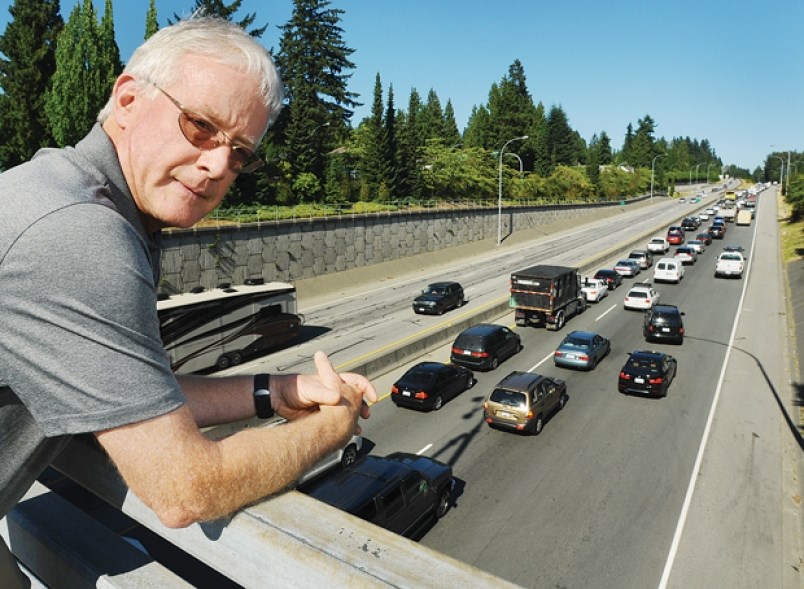When it comes to the notion of mobility pricing, District of North Vancouver Mayor Richard Walton will be the first to admit it’ll be a rough ride.
The Mobility Pricing Independent Commission released its high-level report on May 24, laying out two strategies for using road and bridge tolls to help cut down on traffic and reduce commute times.
“It’s generated a significant amount of interest – all negative – and immediately it’s like summary execution and judgment,” Walton said.
But he added the plan was only intended to be a starting point for more discussion.
After months of consultation, the commission recommended TransLink further explore tolls for certain “congestion points” – mostly bridges – or distance-based charges based on the number of kilometres driven.
Though there are many caveats that the exact details would have to be determined with more study, the commission did put forward some notional numbers.
Under the congestion point model, the commission suggested tolls starting at $3.55 for using either the Lions Gate Bridge or Ironworkers Memorial Second Narrows Crossing to cross into Vancouver during the morning rush hour and another $4.59 to return during the evening rush. Those commuting to the North Shore via the bridges could expect an even higher daily ding of $4.30 and $4.52, respectively. Off-peak charges for bridge crossings would be $1.06 for going downtown and $0.86 for coming back.
Though harder to implement, the commission also recommended exploring carving the Lower Mainland up into zones that charge varying prices based on distance driven. For the North Shore, the suggested charges range from 15 to 32 cents per kilometre during peak times.
Estimates of how much a tolling system could cost an average driver ranged from $1,000 to $2,700 a year.
“That immediately has put all the focus into ‘That’s another tax grab’ without the value proposition being even remotely apparent,” Walton said.
Lost in the plot has been how giving drivers a reason to avoid rush hour or find alternatives to the single-occupancy vehicle would mean less time on the roads for the vast majority, said Walton.
“It’s not about raising money. It’s more about using some kind of financial payment in order to convince a small number of people to shift their travel away from peak times. There are some people who will never be able to shift their travel away from peak times. I get that. ... You don’t have to move large numbers of people out of that congested time period in order to provide value for all those folks who have no alternative,” Walton said.
North Vancouver-Seymour Liberal MLA Jane Thornthwaite, however, is coming down on the side of people who have no choice.
“I worry about all the extra taxes and I do not want people getting punished for having to drive a long time because there is no other option. Particularly for my constituents. It’s all very fine in Lonsdale. You’ve got other options. But in Deep Cove, a lot of people won’t have the option and they’ll get punished just by driving through the Lower Lynn interchange area,” she said.
People in the business community, particularly those who rely on goods movement or have to pay for their employees’ transportation time like many trades do, are on board, Walton said.
“The commercial sector gets it,” he said. “A few dollars is a small cost compared to the inefficiencies of paying staff sitting in idling traffic.”
TransLink will likely take up the issue again but not until 2019 after there is a new batch of mayors sworn in, Walton added.
Any changes to allow mobility pricing would have to be approved by the province and, Walton noted, both the B.C. Liberals and the NDP see tolls as an “election killer.” But the region is growing, Walton said, and traffic may have to get worse before people embrace the idea.
“It takes a lot of political will and it takes a huge amount of public engagement and education for people to see the value in it. But that’s why the dialogue needs to start and it needs to start now.”



